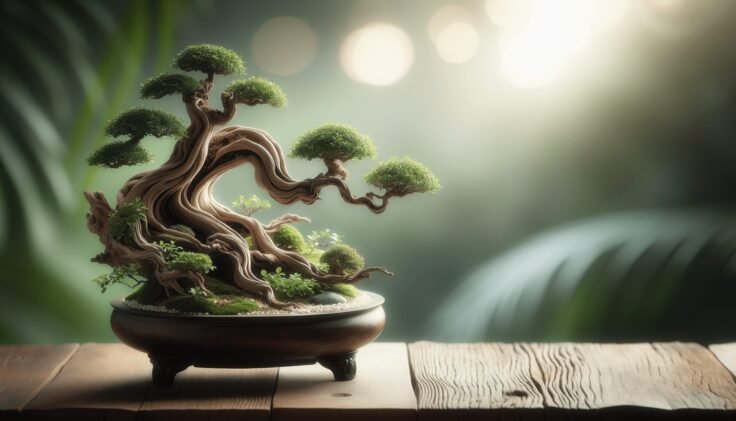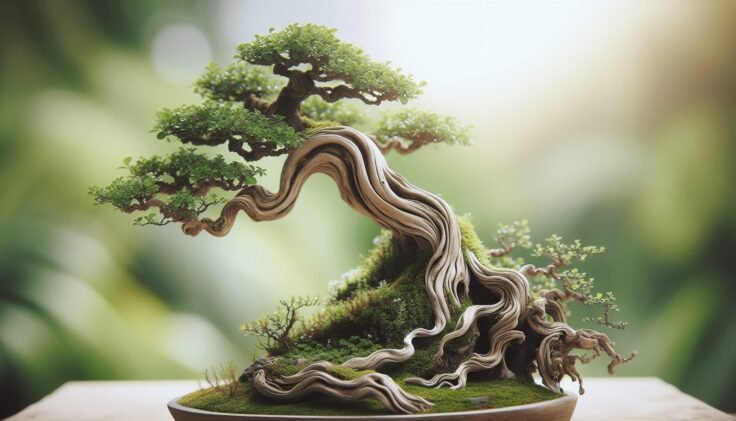Have you ever wondered how you can bring a touch of the exotic into your home without relying on traditional houseplants? Driftwood bromeliads could be the perfect solution. These stunning plants not only offer a unique way to incorporate greenery into your living space but also serve as remarkable focal points, drawing the eyes and sparking conversations. Allow yourself to imagine how these beautiful plants can transform your indoor or outdoor spaces, enhancing the beauty and creating a rainforest-like ambiance in your own home.

What Are Driftwood Bromeliads?
At the heart of the fascination with driftwood bromeliads is the unique combination of natural wood and exotic plants. Essentially, driftwood bromeliads refer to bromeliad plants that have been artfully mounted on pieces of driftwood. This method not only creates an aesthetically pleasing arrangement but also mirrors the way many bromeliads naturally grow in the wild—perched upon trees and rocks in tropical and subtropical climates.
The Bromeliad Family
Bromeliads are a diverse family of plants, comprised of approximately 3,000 species and countless hybrids. Originating primarily from Central and South America, these plants are known for their striking foliage and vibrant colors, which can range from deep greens to bright reds and purples. Their ability to thrive without soil, drawing nutrients and moisture from the air, makes them particularly suited to creative presentations like driftwood arrangements.
The Unique Aesthetics of Driftwood
Driftwood, known for its weathered appearance and unique shapes, adds an artistic element to bromeliad displays. Each piece of driftwood is distinct, characterized by its journey through rivers and seas before reaching the shore. Its organic, rustic texture pairs beautifully with the vibrant and structured form of the bromeliads, resulting in a harmonious balance of natural elements.
Benefits of Using Driftwood Bromeliads
Incorporating driftwood bromeliads into your home can bring a range of aesthetic and practical benefits. Not only do they enhance the visual appeal of your space, but they also contribute to a healthier indoor environment.
Enhancing Aesthetic Appeal
Driftwood bromeliads act as living sculptures, providing a dynamic and interactive piece of art for any room. Their three-dimensional form brings life to spaces both small and large, whether they’re mounted on walls, hanging from ceilings, or gracing tabletops.
Improving Air Quality
Like many houseplants, bromeliads help improve air quality by filtering out toxins and releasing oxygen. Their epiphytic nature—ability to grow without soil—allows them to absorb pollutants and moisture, potentially reducing humidity and impurities in your indoor air.
Low Maintenance and Versatile
Bromeliads require relatively low maintenance once they are established. Their ability to thrive with minimal care makes them an excellent choice for both beginner and experienced plant enthusiasts. Moreover, their versatile nature allows you to experiment with placement and display options, accommodating a variety of interior designs and preferences.
How to Select the Right Driftwood and Bromeliad
Creating your own driftwood bromeliad display begins with the careful selection of both driftwood and bromeliad varieties. Understanding what to look for ensures a successful and harmonious arrangement.
Choosing the Perfect Driftwood
When selecting driftwood, consider the size, shape, and texture that will complement your space and bromeliads. Look for pieces with interesting curves and nooks that can securely hold the bromeliads. The wood should be clean, dry, and free from pests. You can often find suitable driftwood by visiting local beaches, riverbanks, or garden centers that carry decorative wood.
Selecting the Ideal Bromeliad Species
Choosing the right bromeliad species is crucial to your display’s success. Popular varieties for driftwood mounting include:
| Bromeliad Species | Description |
|---|---|
| Tillandsia (Air Plants) | Known for their ability to thrive without soil, making them perfect for mounting. |
| Neoregalia | Offers vibrant colors with rosettes of flat leaves; thrives in indirect sunlight. |
| Aechmea | Recognized for their striking flower spikes and robust nature. |
By considering factors like light availability and humidity levels, you can select bromeliads that will flourish in your specific environment.
How to Create Your Driftwood Bromeliad Display
Creating a driftwood bromeliad display is an enjoyable project that allows for personal expression. Following these steps will guide you through the process of crafting your unique piece.
Preparing the Driftwood
Before mounting bromeliads, ensure the driftwood is properly prepared. Clean it thoroughly by soaking in a solution of water and vinegar to remove any salt, debris, or pests. Let the wood dry completely, as moisture can lead to decay over time.
Mounting the Bromeliads
To mount bromeliads, start by determining their positioning based on the driftwood’s contours. Use non-corrosive wires, fishing line, or a glue suitable for plants to secure the bromeliads to the wood. Avoid metal wires that may rust and harm the plant. Ensure the base of the plant is stable and receives adequate air circulation.
Watering and Placement
Once assembled, mist the bromeliads regularly to provide moisture, especially in drier climates. The frequency depends on your home’s humidity levels and the specific needs of the bromeliad species. Place your display in a location with bright but indirect light to mimic their natural habitat.

Caring for Your Driftwood Bromeliads
While relatively easy to care for, driftwood bromeliads require some attention to thrive. Understanding their basic needs will ensure they remain healthy and beautiful.
Light Requirements
Most bromeliads prefer bright, indirect light. Placing your display near a window with filtered sunlight is ideal. Some species can tolerate lower light conditions, but this may affect their growth rate and vibrance.
Watering Guidelines
Bromeliads have varying water needs based on their type. Generally, keeping the base of the plant lightly misted and ensuring the driftwood does not retain too much moisture to prevent rot is beneficial. Watering once or twice a week should suffice, but adjust as needed based on the environment.
Humidity Considerations
As tropical plants, bromeliads thrive in humid conditions. If your home tends to be dry, consider using a humidity tray or regularly misting the air around the display.
Fertilization Tips
Feeding bromeliads is not always necessary, but a diluted, balanced liquid fertilizer applied during the growing season can enhance growth. Avoid direct contact with the leaves to prevent burning, and always adhere to the fertilizer’s instructions.
Dealing with Common Issues
While bromeliads are resilient, they can occasionally face issues. Knowing how to identify and resolve these problems will help maintain your display’s health.
Yellowing Leaves
Yellowing leaves may indicate overwatering or insufficient light. Ensure the base dries out slightly between waterings and provide appropriate lighting. Removing dead or decaying leaves can also promote healthier growth.
Pest Control
Common pests include aphids, mealybugs, and scale. Regular inspection and applying insecticidal soap or a diluted neem oil solution can manage minor infestations effectively.
Rot Prevention
Root and base rot can occur if the driftwood remains continuously wet. Guarantee proper drying between waterings and avoid water accumulation around the plant base.
Final Thoughts on Driftwood Bromeliads
Embracing the beauty of driftwood bromeliads allows you to create a stunning, low-maintenance addition to your home. Each display is unique, reflecting the natural artistry of both plant and wood. By understanding their care requirements and allowing yourself to experiment with various combinations, you can enjoy a living masterpiece that enhances the tranquility and allure of your space. Driftwood bromeliads are more than just a plant; they’re a testament to nature’s creativity, eagerly waiting to be a part of your home.



